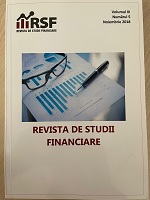The impact of the VAT gap on the degree of taxation of an economy-analysis with panel data
The impact of the VAT gap on the degree of taxation of an economy-analysis with panel data
Author(s): Victor Ogneru, Stelian StancuSubject(s): National Economy, Fiscal Politics / Budgeting
Published by: Editura Mustang
Keywords: taxation; public finance; panel analysis; VAT gap; share of tax revenues to GDP;
Summary/Abstract: In this article we use econometric methods to identify and analyze the intensity of potential causality links between the VAT gap and the ability or the performance of a state to collect taxes and, consequently, to finance public projects and programs. This capacity or performance is assessed by the share of tax revenues to GDP, which also reflects the degree of taxation of an economy. On the other hand, the determinants of the VAT gap were investigated. The data set used is of the panel type, consisting of values with an annual frequency, for the period 2014-2019, for 26 Member States of the European Union. The methods used in the analyzis are single and multiple linear regressions on panel data with fixed effects. Based on the results obtained for the mentioned sample, the existence of a statistically significant linear link between the mentioned variables is confirmed, but it was also found that, in general, the performance of tax revenue collection in a certain period depends on the performance of the previous period. Therefore, the influence of other exogenous, economic and non-economic variables is visible, which must be identified and analyzed. However, it was found that the level of government spending, confirming to some extent the Keynesian growth model, significantly influences the level of tax revenue. At the same time, the following variables were found to have an overwhelming influence on the VAT gap: the share of people exposed to the risk of poverty or social exclusion, the level of employees’ compensation, the final household consumption and the level of gross value added created in the economy. All these variables significantly determine the formation of the VAT tax gap, in a proportion of 95%.
Journal: Revista de Studii Financiare
- Issue Year: 7/2022
- Issue No: 12
- Page Range: 164-184
- Page Count: 21
- Language: English

